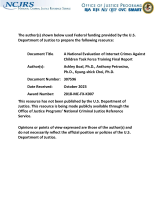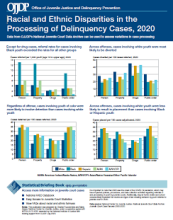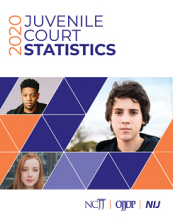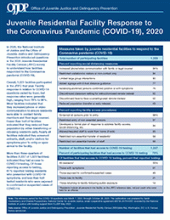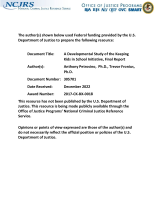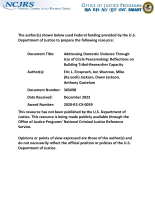COVID-19
A National Evaluation of Internet Crimes Against Children Task Force Training Final Report
Webinar: NIJ Research Assistantship Program Informational Webinar
This recorded webinar, originally held September 28, 2023, provides information on NIJ’s Research Assistantship Program, which offers highly qualified doctoral students the opportunity to bring their expertise to NIJ to work across offices and program areas to obtain a practical and applied research experience. The program is a research focused professional development opportunity for doctoral students from all academic disciplines. NIJ...
Exploring the Impact of Station Dog Programs on Agency Wellness and Community Relationships
NIJ Multisite Impact and Cost-Efficiency Evaluation of Veterans Treatment Courts
Nanoparticle-Decorated Micropillars As Integrated Raman Spectroscopy and Mass Spectrometry Substrates for Quantitative and High-Throughput Toxicology Drug Analysis
Racial and Ethnic Disparities in the Processing of Delinquency Cases, 2020
Juvenile Court Statistics, 2020
Police Use Science and Community Partnerships to Reduce Gun Violence
Impacts of Successive Drug Legislation Shifts: Qualitative Observations from Oregon Law Enforcement
Juvenile Residential Facility Response to the Coronavirus Pandemic (COVID-19), 2020
Validating Isoscaping Methods: A Study of Oxygen, Strontium, and Sulfur
Economic Justice for Survivors of Intimate Partner Violence
See the YouTube Terms of Service and Google Privacy Policy



